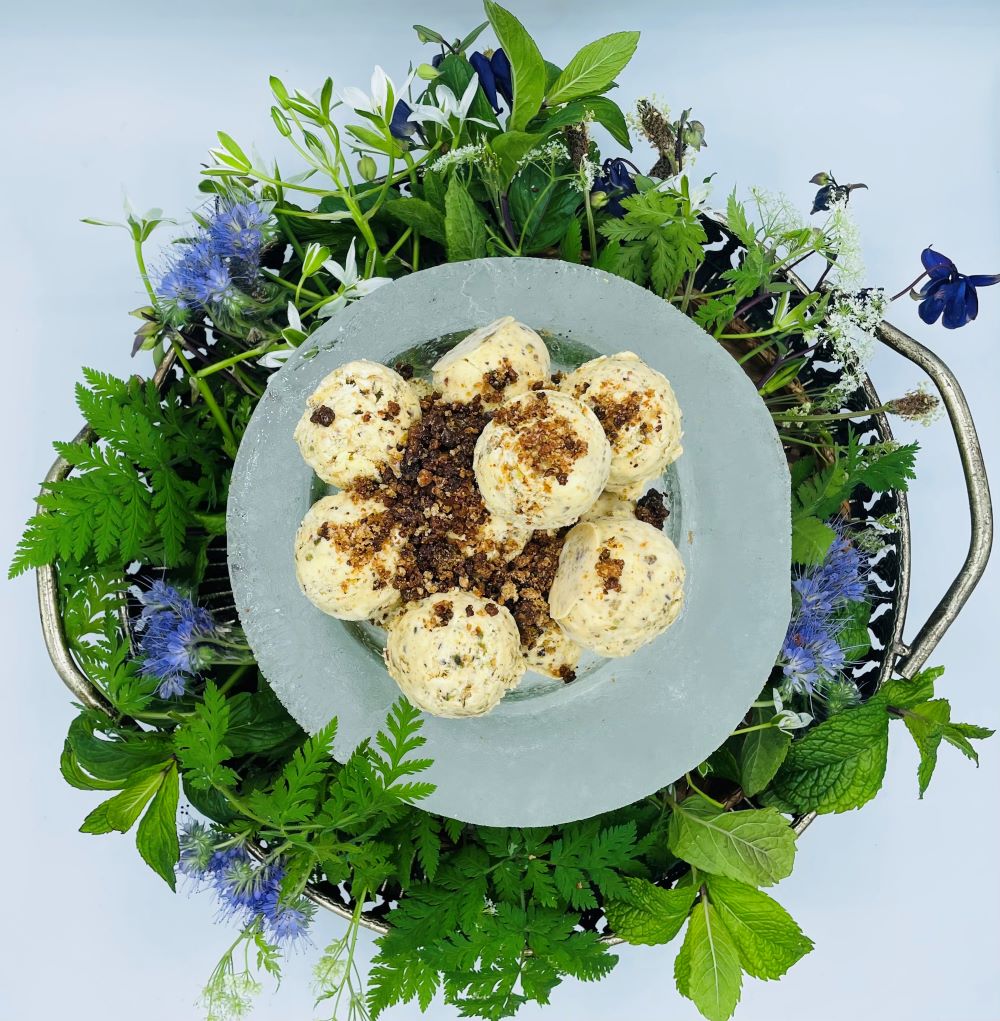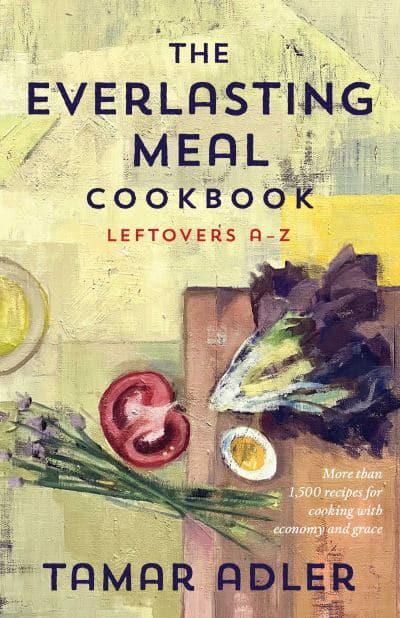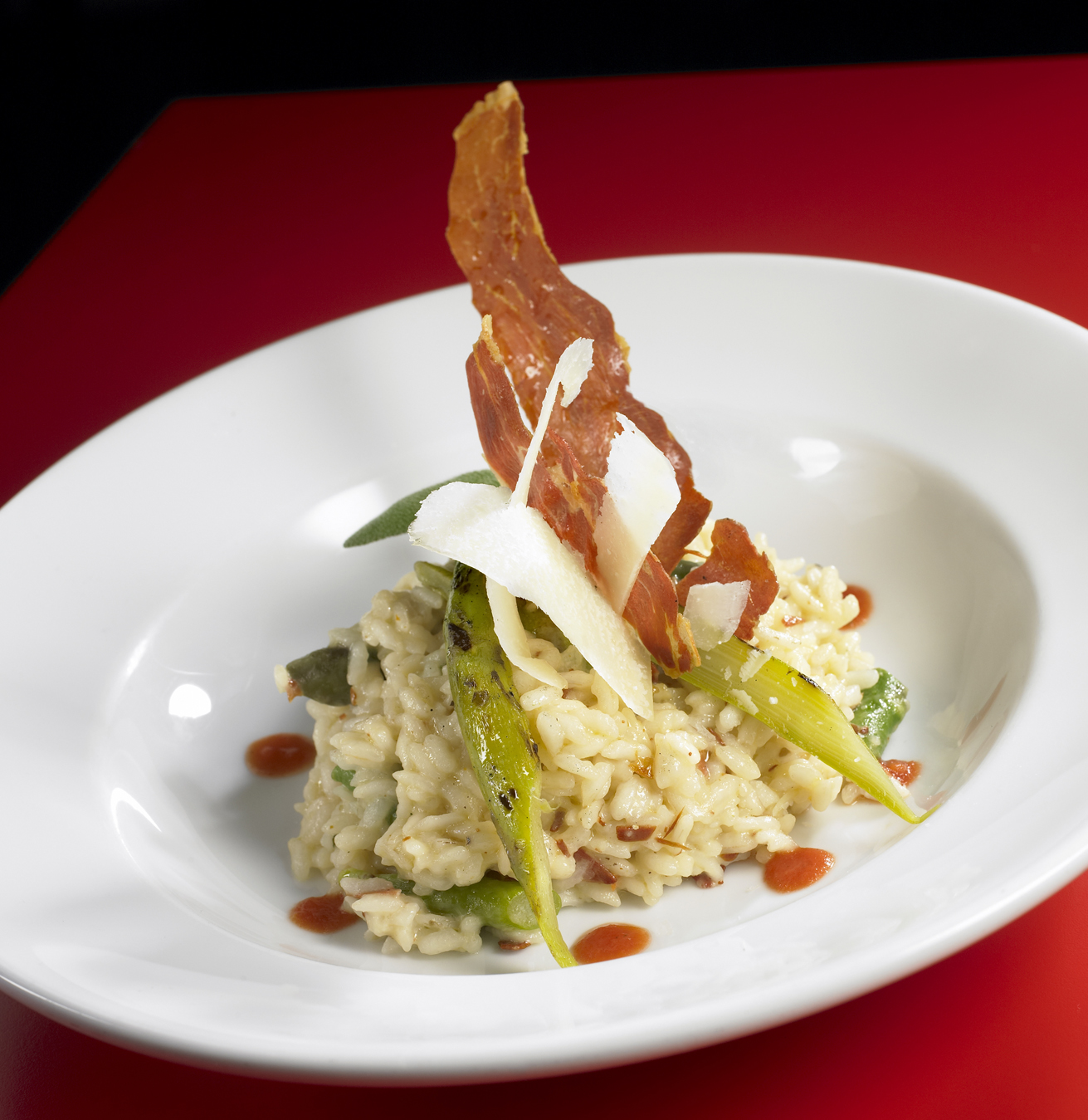The Darina Allen Column - Sustainability
 Sustainable continues to be quite the buzzword with many awards being meted out to establishments and companies who are making strides in this area. Yet Ireland with its clean, green image still ranks very poorly on the (SDG's) Sustainable Development Goals. Having said that, we have apparently moved from 11th out of 15 comparable countries in the EU in 2022 to 10th out of 14 this year on the Sustainable Progress Index. Confusing or what...
Sustainable continues to be quite the buzzword with many awards being meted out to establishments and companies who are making strides in this area. Yet Ireland with its clean, green image still ranks very poorly on the (SDG's) Sustainable Development Goals. Having said that, we have apparently moved from 11th out of 15 comparable countries in the EU in 2022 to 10th out of 14 this year on the Sustainable Progress Index. Confusing or what...
Overall though, it seems the general public are anxious to make a difference and long for bold, courageous leaders to show us the way with legislation and incentives.
We fear that time is running out for our planet and desperately want to play our part in making a difference in the many little ways we can in our own environment.
Well, by coincidence, a brilliant new book I'd ordered recently arrived on my desk last week, it's entitled 'The Everlasting Meal Cookbook: Leftovers A-Z' by Tamar Adler, author of yet another gem, 'Something Old, Something New'.
Regular readers of this column, and those of you who have been to the Cookery School will be aware that I have always loved to use up leftovers. It's not a recent conversion on the road to Damascus...for me it's almost like a game...I get terrific satisfaction out of using up leftovers deliciously.
I suppose that dates back to my childhood, when wasting anything even a piece of spare string wasn't an option, we actually washed and hung out plastic bags to dry on the clothesline in the early days...
I reckon to be able to do a ton of riffs on leftover bits of this and that but Tamar Adler has 1,500 recipes 'for cooking with economy and grace'.
Here at the Cookery School, we have a 'Leftover of the Day' suggestion, so the students learn the art and skill of using up leftovers, creatively – an essential part of their culinary training.
After all, costs are so high and margins so small nowadays that the chef's attitude to waste can quite easily be the difference between profit and loss in the hospitality business.
There is waste at every level in many different areas of production. There can be phenomenal waste in the vegetable and food sector on the farm, partly to do with the tight specifications on size and shape for the retail trade, but also for traditional reasons. Forever, we've chopped off and discarded the green tops of leeks and cauliflowers...dumped the turnip greens so sought-after in many countries.
Young beetroot stalks and greens are delicious in salads or wilted with a lump of good butter or doused in a good extra-virgin olive oil.
The tender sprouting shoots at the end of the kale or broccoli crop are a true delicacy, meltingly tender. They ought to be sold at twice the price, that's if you could even get them. Bravo to the Organic Stall at the Skibbereen Farmers' Market for introducing them to their customers. Many will already know how good those thick broccoli stems are peeled and grated into coleslaw – free, delicious and nutritious food.
Use the tough ends of the asparagus that's in season at present to make a simple asparagus stock...Remember you have paid a premium price for it, so use the stock to make an asparagus risotto.
Throw garlic and ginger peelings into a 'stock box' in the freezer with other vegetable peelings and fresh herb stalks to make a celebration pot of stock every now and then when you have the time.
The new season's vegetables are jumping out of the ground right now. Don't waste a scrap - we're using broad bean shoots in soups, add to stews, gratins, risotto, frittatas, melted greens or use fresh in salads...
And on and on, once you begin to think zero waste, it becomes like an exciting challenge.
Enjoy the fun and feel-good factor of working towards being sustainable.
RECIPES TO TRY:
 Brown Bread Ice Cream
Brown Bread Ice Cream
This is also known as 'poor man's praline ice cream' because it gives a similar texture but uses cheaper ingredients. This is a great way to use up brown soda or wholemeal yeast breadcrumbs that would otherwise be wasted. Serves 12–16
Ballymaloe Vanilla Ice Cream (see recipe below)
350g (12oz) brown soda or wholemeal yeast breadcrumbs
150g (5oz) vanilla sugar
150g (5oz) soft dark-brown sugar
First make the Ballymaloe Vanilla Ice Cream Serves 12–16
4 organic egg yolks
100g (3½ oz) sugar
1 teaspoon pure vanilla extract or seeds from 1/3 vanilla pod
1.2 litres (2 pints) softly whipped cream (measured after it is whipped, for accuracy)
Put the egg yolks into a bowl and whisk until light and fluffy (keep the whites for meringues). Combine the sugar with 200ml (7fl oz) water in a small heavy-based saucepan. Stir over heat until the sugar is completely dissolved, then remove the spoon and boil the syrup until it reaches the 'thread' stage, about 106–113°C (223–235°F): it will look thick and syrupy, and when a metal spoon is dipped in the last drops of syrup will form thin threads. Pour this boiling syrup in a steady stream onto the egg yolks, whisking all the time by hand. (If you are whisking the mousse in a food mixer, remove the bowl and whisk the boiling syrup in by hand; otherwise, it will solidify on the sides of the bowl.)
Add the vanilla extract or vanilla seeds and continue to whisk the mixture until it becomes a thick, creamy white mousse.
This is the stage at which, if you're deviating from this recipe, you can add liquid flavourings such as coffee. Fold the softly whipped cream into the mousse, pour into a bowl, cover and freeze.
Next toast the breadcrumbs. Preheat the oven to 230°C/450°F/Gas Mark 4.
Spread the chunky breadcrumbs on a baking tray. Sprinkle with sugar and toast in the oven for 10-15 minutes. Stir every 4 or 5 minutes until the sugar caramelises and coats the breadcrumbs. Turn out onto a Silpat mat and leave to cool. Pulse the caramelised breadcrumbs into small, chunky bits in a food-processor. When the ice cream is semi-frozen, fold in the mixture and freeze until fully frozen.
 Pasta Frittata
Pasta Frittata
Taken from The Everlasting Meal Cookbook: Leftovers A-Z published by Scribner Tamar Adler (author), Caitlin Winner (illustrator) Hardback (22 Jun 2023 c.€35)
3 eggs (whisked with a little salt)
400-600g (14oz-1¼ lb) cooked pasta
olive oil
30g (1¼ oz) chopped parsley (optional)
freshly grated Parmesan for serving
Heat the oven to 190°C/375F°/Gas Mark 5.
In a bowl, whisk the eggs and salt, stir in the other ingredients.
Heat a 20.5-23cm (8-9 inch) ovenproof saucepan over a medium heat. Coat well with olive oil. Add the egg mixture and move the set part toward the middle a few times. As soon as the sides have started to cook, transfer to the oven and bake for 10-15 minutes. Remove from the oven and sprinkle with Parmesan. Cool briefly in the pan, then turn out onto a serving plate. Frittatas are better served at room temperature than hot.
Egg Salad Fried Rice
Taken from The Everlasting Meal Cookbook: Leftovers A-Z by Tamar Adler published by Scribner
2-3 tablespoons peanut or grapeseed oil
3 tablespoons sliced or chopped onion or scallion
1 tablespoon finely chopped garlic
250g (9oz) leftover cold cooked rice
salt
anything else you want in your fried rice
1-3 tablespoons egg salad (see recipe below)
Egg Salad
boiled eggs
mayonnaise
garlic
salt
grated lemon zest
minced chives
First make the Egg Salad Smash the eggs with a fork and mix in mayonnaise sparingly. You can always add more. Pound the garlic to a paste with a little salt. Add 1/8 - ¼ teaspoon garlic paste for every 2 eggs, then sprinkle with lemon zest and minced chives. Mix, taste and adjust seasoning
To make the Fried Rice: Heat a wide pan or wok. Add the oil, onion or scallion and garlic, fry for 5 seconds then add the rice. Spread the rice over the surface of the pan and add salt to taste. When it seems like every grain has had a moment to fry, scoop the rice all together, add anything you want and the egg salad and stir it through.

Ballymaloe Risotto with Asparagus
Everyone needs to be able to whip up a risotto, comfort food at its best and a base for so many good things, from crispy pork lardons or kale to foraged nettles... Serves 6
225g (8oz) precious Irish asparagus, in season now
1-1.3 litres (1¾-2¼ pints) chicken or vegetable stock made from the asparagus ends
50g (2oz) butter
2 tablespoons extra virgin olive oil
1 onion, finely chopped
400g (14oz) risotto rice, such as arborio, carnaroli, or Vialone Nano
50g (2oz) freshly grated Parmesan cheese or a mixture of Parmesan and Pecorino
sea salt.
Cook the asparagus in boiling salted water for 2-3 minutes until al dente. Cut into 5mm (¼ inch) thick slices at an angle.
Bring the stock to the boil, reduce the heat and keep it at a gentle simmer. Melt half the butter in a heavy-bottomed saucepan with the oil, add the onion, cover and sweat over a gentle heat for 4–5 minutes until soft but not coloured. Add the rice and stir until well coated. Cook for a minute or so and then add 150ml (5fl oz) of the simmering stock, stir continuously, and as soon as the liquid is absorbed add another 150ml (5fl oz) of stock. Continue to cook, stirring constantly. The heat should be brisk, but on the other hand if it's too hot the rice will be soft outside but still chewy inside. If it's too slow, the rice will be gluey. It's difficult to know which is worse, so the trick is to regulate the heat so that the rice bubbles continuously. The risotto should take 25–30 minutes to cook.
After about 20 minutes, add the stock about 4 tablespoons at a time. I use a small ladle. Watch it very carefully from there on. The risotto is done when the rice is cooked but is still ever so slightly al dente. It should be soft and creamy and quite loose, rather than thick. The moment you are happy with the texture, stir in the asparagus plus the remaining butter and Parmesan, taste and add more salt if necessary. Serve immediately on hot plates.
Alternatively, you can pre-cook the rice for finishing later. After about 10 minutes of cooking, taste a grain or two between your teeth. It should be firm, slightly gritty, definitely undercooked but not completely raw. Remove the risotto from the saucepan and spread it out on a flat dish to cool as quickly as possible. The rice can be reheated later with some of the remaining stock and the cooking and finishing of the risotto can be completed.
Risotto does not benefit from hanging around – the texture should be really soft and flowing.
HOT TIPS
Irish Sea Salt
A little flaky sea salt put a finishing touch to many of not just savoury but also sweet dishes – chocolate and toffee squares, brownies, ice cream...I love the texture of Achill Ireland Sea Salt from the Wild Atlantic Way, also look out for Ballycotton Sea Salt in East Cork.
• Irish Atlantic Sea Salt (West Cork)
• Dingle Sea Salt
• West Dingle Sea Salt
• Oriel Sea Salt (Co Louth)
Another exciting Autumn Foraging at Ballymaloe Cookery School on Saturday, 2nd September 2023
An opportunity to learn how to identify the delicious and nutritious foods that grow wild all around us and not just in the countryside but also in urban areas. In just a couple of hours, learn to spot 40-50 different plants and how to incorporate them into your family meals. Who knows when this knowledge could turn into survival skills...Booking essential, limited numbers.
For more information, see http://www.cookingisfun.ie/





There are currently no comments
Leave a comment
Not a member? Register for your free membership now!
Or leave a comment by logging in with: